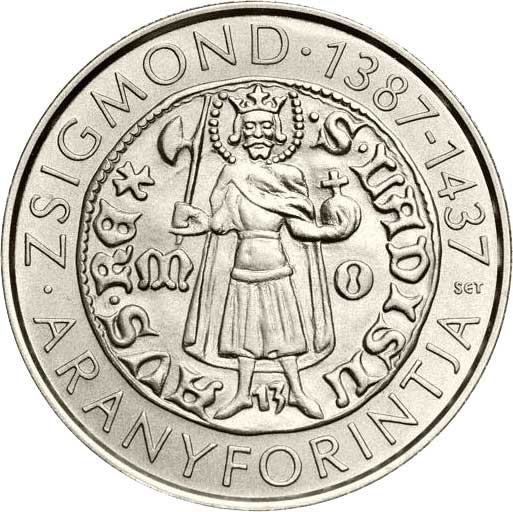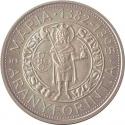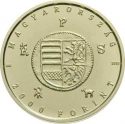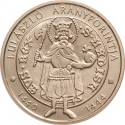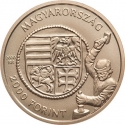You are about to finish your registration. Please check your mailbox (including spam folder). There should be a letter with a confirmation link. Check setting to make sure that your e-mail address is correct.
Send letter againDescription
The Hungarian National Bank issues a gold commemorative coin "Gold Florin of Sigismund of Luxemburg" as the fourth piece in the series of Medieval Hungarian gold forints.
Sigismund of Luxembourg (1368–1437), also known as Sigismund of Hungary, was a prominent figure in late medieval Europe. He served as Elector of Brandenburg from 1378 to 1388 and again from 1411 to 1415, King of Hungary and Croatia from 1387, Holy Roman Emperor from 1433, King of Germany from 1411, and King of Bohemia from 1419. He was a member of the Luxembourg dynasty, named after his ancestral lands.
Sigismund was notable for his exceptional diplomatic skills and organizational abilities, making him one of the most influential European rulers of his time. He organized the last large-scale European crusade in 1396, played a key role in ending the Western Schism in 1417, and initiated the campaign against the Hussites. In Hungary, he ruled alongside his first wife, Mary of Hungary, the daughter of King Louis the Great, until her death in 1395. As King of Hungary, he is remembered for his construction projects in Visegrád, Buda, and Székesfehérvár, his defensive measures against the Ottoman Empire, the establishment of the border fortress system, and his progressive laws.
After suffering a decisive defeat against the Ottomans, Sigismund founded the Order of the Dragon to organize collective resistance against them, and later secured the German and Bohemian thrones. In the absence of a male heir, he designated his daughter's husband, Albert of Habsburg, as his successor in his kingdoms. He reigned over Hungary for more than fifty years, becoming its second-longest-reigning monarch. Sigismund was highly educated, fluent in seven languages, and enjoyed social gatherings and knightly tournaments. He played a prominent role in the Council of Constance, which ended the Papal Schism but also contributed to the Hussite Wars.
Engraver: Tamás E. Soltra
Obverse

|
Depicts the reverse of Sigismund of Luxemburg's Gold Florin, which features Saint Ladislaus (Ladislaus I) holding a battle-axe and an orb. A halo is shown above his crowned head, with the letters "M–O" beside him, indicating the privy mark of Buda Chamberlain Mikes Jemnisti. The number 13 is placed between the saint's legs. The Latin inscription "Sanctus Ladislaus Rex" (Saint Ladislaus the King) encircles the design. The coin is surrounded by the name of the king and the dates of his reign above, the inscription "GOLD FLORIN" below, separated on the right by the engraver's initials and on the left by a dot. •ZSIGMOND•1387-1437 |
|---|---|
Reverse

|
Depicts the obverse of Sigismund of Luxemburg's Gold Florin, which features the coat of arms of Sigismund of Luxembourg. Along the edge, the upper inscription reads "HUNGARY", and the lower inscription, separated by a dot, displays the denomination and the word "FORINT." The two inscriptions are separated by the year of issue, "2016," on the left side and the mint mark, "BP." on the right side. Under at least ten times magnification, microtext appears within the mint mark. MAGYARORSZÁG |
| Edge |
2000 Forint
Gold Florins of Medieval Hungary
Gold Florin of Sigismund of Luxembourg
Subscribe series
KM# 901 Adamo# EM317
Gold Florins of Medieval Hungary
Gold Florin of Sigismund of Luxembourg
Characteristics
| Type | Commemorative Issue (Circulating) |
| Material | Copper Nickel |
| Weight | 2.7 g |
| Diameter | 20 mm |
| Thickness | - |
| Shape |
|
| Alignment | Medal |
| Mint |
Budapest Mint (BP)
|
Related coins
Gold Florins of Medieval Hungary
